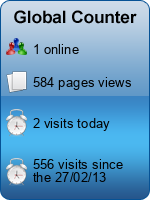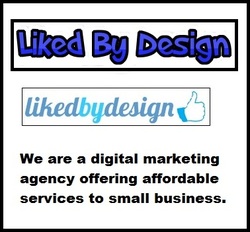 The internet has changed the way business is done, literally changed it in a big way. In the old days, a big company can be available to other countries through company extensions and that is how people from Europe or any other country for that matter, to wear a shirt that is made by an American company.
Now, its easy to get those merchandise simply by clicking a button in a website. Services are now being offered as well. The internet has widened the way for all types of businesses.
Having said all these things, the internet also gave birth to a new brand of company. That company provides services to those business companies. We call them SEO companies, their job is to make your company website the top out of all your rivals with the same niche. SEO companies are a dime a dozen now so, choosing one is rather difficult. You need to read and understand how that company performs the job. The company that you choose should be diligent, creative and most of all, trustworthy.
One good example would be LikedbyDesign. This is an SEO company that started out in 2011 by an aspiring young entrepreneur in Sydney, Australia. Like all companies they started out small, working a few clients at a time in a little marketing boutique but, in time they grew big and transformed that small company into an international success with branches in New York and Sydney. Their growth shows customers that, they are good what they do.
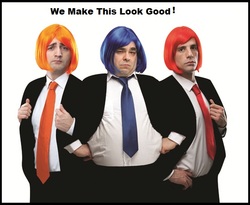 So you’ve started up your own business or even need a design to sell/promote your product or service or business. You need a good logo, some business cards, stationery & assorted marketing collateral. Where can you go from here? Many individuals will fall into the trap of signing up for a ‘can’t believe it’s so cheap’ design deal online. There are plenty of people offering design services such as a Google apps consultant, and they range in experience from true professionals with years of experience to high school students with fake software who would like to make a quick buck. Will you get the opportunity to speak with them about your business And the direction it is headed?
One of the best ways to get a great designer is to ask around. If you have a buddy or colleague that has a good logo or brochure for their business, simply ask who has done their design work. Contacting someone whose work you're already impressed with is a step in the right direction. Failing this it might be time to put Google to work for you. Search on the internet for graphic designers in your area & start to check out their sites. These days the very best designers will have an online profile so prospective customers can get a feel for the work they have completed.
When looking for a graphic designer there are some questions you need to answer:
Do they have a professional, well designed site? The design quality of their website is most likely a fair reflection of their design skills.
Do they have a strong portfolio along with a wide range of designs? It is important for you to like their work & feel assured they can speak your message.
Are they very easily contactable? Are you able to get in touch with them by phone or do they only offer online/email contact? A designer really has to get within your business which comes best from direct contact with you, possibly face to face, over the phone or even a video call.
Do they have great interpersonal skills? A great designer should be able to interact well with their clients. They will work carefully with you to develop a creative brief that is right on target.
Will they offer you with contact details for a couple of their clients so you can get a reference? An excellent designer will have no problems letting their clients sing their good remarks.
How do they charge for their work? Will you be paying an per hour rate or are they confident enough to charge a flat fee for the job? Do not hesitate to ask questions about their fees – you do not want any nasty surprises that will throw your financial budget down the drain.
Will these people manage to carry out the work in a timely fashion? Do not expect to find a designer & have your new logo within a couple of hours. Provide a timeline that gives your designer plenty of time to plan, research & most of all create!
Are they appropriately certified? It is a good idea to check your prospective designer’s qualifications. It might not be a regulated profession in Australia at this time, but graphic design is a specialized field like accounting, architecture or law. You wouldn’t hire a lawyer that was not properly qualified and the same should go for any graphic designer. Professional graphic designers will be happy to tell you where they studied and what certification they obtained. Their application of design principles and adhering to design procedures and commercial guidelines is a good indicator of a professional, well versed graphic designer.
When you find the designer that is the perfect fit for you the results will be awesome. Always remember that communication is essential – both before, during & after the design process. Never accept a design that you do not absolutely love & can stand proudly alongside. A great designer will never want you to be satisfied with something good – they will want you to be amazed by the end result.
Learn more about graphic designing from Icreate Solutions.
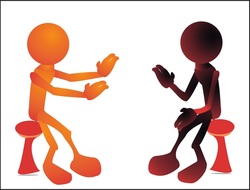 You have been on the hunt for an excellent new designer. You have googled, viewed a Brisbane advertising agency, emailed, called and met a few until finally you meet the designer you have been looking for. You may be thinking that the hardest part is over. Certainly, finding a designer who a) was suitably skilled, b) excited about your project and c) affordable means that it will all be easy sailing from here! Hmmmmm, not really!
There are several things that you have to keep in mind (and practise) when it comes to dealing with your new found partner in design. Actually, it really just comes down to one word: communication
Simple really, isn’t it. Communication is about sharing information.
Good communication will result in you building an amazing, collaborative relationship with your designer. Bad communication will most likely end up with you not receiving whatever you sought. Now, I’m not going to sit here and put it all on your (the client’s) shoulders. A client/designer relationship is the epitome of a two way street – there needs to be great communication from both sides. So to assist you, I’ve written several points below that will help both client and the designer to create a successful relationship.
CLIENTS
* Be open and honest with your designer. If you’ve got a couple of designers working on concepts to suit your needs, tell them. You never know, a little competition may just produce some out of the box results.
* Be clear, but concise with your vision. Understand what you want. Choose your words carefully to describe what you are after. For example , using the words ‘bold’ and also ‘vivid’ will most likely produce a different design result to describing your vision as ‘dark’ and ‘intense’.
* Understand that good design does take time. Nothing takes five minutes (and if it did I would be a bit worried! ). Determine sensible timeframes at the outset with your designer.
* Be able to make a decision. When your designer presents you with choices, you can take your time, but ultimately you need to make a YES or NO decision and own it. As always, communicating your reasoning behind your decision can help everyone progress.
* Provide a little praise along the way. Always give credit where credit is due. We hope you can gush when you see your design work, but even a basic ‘thank you’ or ‘great job’ will do wonders for the relationship.
* Pay your invoices promptly. No business wants to chase clients for money, so your designer shouldn’t have to either. If your payment will be late, a fast phone call or email to clarify is more believable than ‘I thought I’d paid that’.
* Trust your designer. A good designer will never lead you down the wrong path. Listen to what they say and trust that their suggestions and advice come from years of experience.
DESIGNERS
* Build a solid foundation with your client. You can not expect to produce amazing results based on a 5 minute phone call and a sketchy creative brief. Take time to understand your client and their business.
* Explain your process to your client. Give them a concept of how you attack a brand new job and give timeframes regarding up-dates, proofs etc .
* Be sure you listen carefully to your clients. In the early stages of a client relationship you need to learn everything you can about them and their business, so keep your ears wide open.
* Give advice when it is warranted. Many clients have very firm ideas about what they really want and how it should appear. As the expert, you might have some ideas which are not necessarily in line with their current thoughts but would benefit the project.
* Avoid industry jargon. Most clients will not know or even need to know what the dpi, ppi, native file, cmyk or bleed is. Keep it nice and simple when requesting information or explaining a design item.
* Try and provide examples whenever you can. When discussing ideas it can often be hard for any client to visualise what you can. If possible email them a good example that shows what you are talking about or give them the url link to check out an idea on the internet.
* Always put everything in writing. No doubt both you and your client are very busy and are working on more than just this project. To make sure that there is no misunderstandings on the way, it's important to document any discussions you might have had about the project and also email them through to the client.
Finally, an important point for both client and designer to remember is to be PROFESSIONAL with one another. When discussing your project either over the phone, through email or face to face, act professionally and treat one another with the respect you both deserve. Over time you may get to know one another on more personal, friendly level – but in the early stages of the relationship keep in mind that everything that you do or say can impact initial perceptions.
A relationship between the designer and a client can be so rewarding and inspiring – and I know this because I am lucky enough to have awesome clients. Just remember the number one rule – COMMUNICATION – and with any luck you will be as lucky as I am with Icreate Solutions.
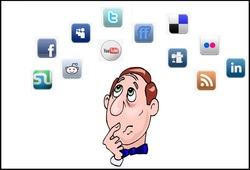 When setting up a brand new business, one of the first things on the ‘To Do’ list is to style a fabulous logo. Every day businesses try, fail and succeed in terms of logo design. One thing is for certain, you definitely want to be in the ‘SUCCEED’ category!
A logo by definition is a graphic symbol or design that a business uses to distinguish its products or services and gain instant identification. A logo might be comprised of an image only or an image together with the name of the business.
However, how do we even start this process? You can ask an IT small business consultant if you have the budget for one. Why don’t we have a look at a few well known and incredibly successful logos and see whatever they have in common. Let’s consider Coca Cola and McDonalds as examples that have stood the test of time as well as some newer success stories just like Fedex and Apple.
There are several key rules that all of these businesses seem to have adopted when designing their logos. It appears that the best logos are:
Simple
More often than not less is more. All of these logos are quite clean and concise. They use basic shapes, fonts and colours. There are no fancy patterns or intricate details. But one thing is for certain, they have impact. Simple doesn’t have to mean weak or boring. In the case of these four logos, simple equals bold and unforgettable.
Flexible
A good logo will work well in every possible media. Our four examples will look just as good online since they will on a label or in a magazine advertisement. They are also recognisable regardless of whether they are shown in full colour or in black and white.
Scalable
Size really does matter. You want your logo to look simply as good on your business card as it would on a billboard. The McDonald’s logo is just as recognisable on the packaging of their French Fries as it is on their large neon store signs. If a design is simply too complex, you can lose some of the detail when you change the size of the logo.
Memorable
A good logo will probably be easy to remember, have impact and last the distance. The Coca Cola logo was designed in 1885 using a fashionable script font from that time period. Over 125 years later it still looks modern and relevant. The McDonald’s ‘golden arches’ are already used since 1968 and is recognisable all around the world. Even Apple and Fedex, who are the new kids on the block, are often remembered. Most people will recognize the business even if only shown a part of the logo design.
If you keep these factors in mind when starting the design procedure of your new logo will be on the right course. At the end of the day, make sure that you stay true to yourself and your business. Think about the way you want your business to be seen by the public. With the aid of a clever designer you will develop an amazing logo design that captures the essence of your business. It may not be a long time before your logo, and therefore your business, is instantly recognisable in the market.
For a better understanding of web design. Check out: Icreate Solutions
 Most people know their business needs a great website, its a given.
The world has changed, everyone is connected to the internet 24/7. Online research forms the first part of just about any buying decision. Every business wants to be there.
Does your business have a great website?
Companies like Brisbane web design say that having a great website is key to success. Thumbs up should you do, that’s an extremely good start. The next question for you, is: Are you working your website? That’s a story for another post.
If you do not have a great web site, you’re more likely to fall into one of three types.
1) You’re a new business and looking to build your first site.
2) You have a website, but it’s not good. Perhaps it was developed 4 or more yrs ago, when web technologies have been much less mature & is now showing its age.
3) You've been busy, and technology frightens you, and you’ve been postponing the task of setting up a website for the last 10 years.
So why do you need a great website?
For a lot of reasons : I’m gonna concentrate on what I consider are the key four.
1) Be Discovered.
People are looking at Mr. Google for all of thier needs, from finding a local plumber, to comparing reviews of local restaurants, it is the way the world works nowadays. You’ve just got to be there, or else potential clients will walk on by, never knowing you’re there.
2) Make An Impression.
You’ve got to put your very best foot forward. In the online world, it’s all about first impressions. We consumers are fickle, and we are spoiled for choice. Subconsciously people will make massive judgements about your business from the instant the home page loads (or the speed in which it loads). If your audience don’t like what they see in the first few seconds, they will click the back button and look at the site of your next competitor. You may be the very best in your industry, but if you have an ugly site, most will write you off as a sub standard company, and move on. You will lose out on oodles of leads. That’s why it is essential you replace that aging shoddy site for a sleek fast and modern reflection on your business.
3) It’s A Center For Your Online Marketing Efforts.
Once you’ve obtained an excellent web site, you have a focus point for wider online marketing strategies. Add a few thought out landing pages to your website for key products or services. Draw people directly to these key sections of your website via targeted online advertising and generate more leads.
4) A Platform To Communicate.
A good modern website must have a blog or news web page. Write regular posts about your items, services and industry. Share beneficial knowledge and insights with your audience. Doing this provides many benefits. Some instant, some delicate and longer term.
- It provides you credibility and implies that your business is an expert in its area.
- Well written posts, are attractive and build trust.
- Frequent addition of new content about your industry, is ideal for improving search engine rankings.
- Each article you post, creates a new potential access point to your website and increases traffic.
- Used in conjunction having a social media strategy can greatly improve traffic and lead generation.
There are obviously many other reasons you need a great website. To learn more check out: Icreate Solutions
|






 RSS Feed
RSS Feed